Almost seven million people, in seventeen days, will drink seven million liters of beer. We are talking about the world’s largest festival – funfair, volksfest, piss-up, whatever you would like to call it – held annually in Munich, Germany… and what’s it called? (everybody now) Oktoberfest!
The sheer size and scale of such an event is unfathomable and must be seen and experienced for one to truly comprehend its grandiose. Various brewing families from within the city limits of Munich (that conform to the German beer purity law) serve their first-class beers in uniquely themed and decorated halls. There are fourteen large and twenty-one small beer halls, so you will always find somewhere to wet your whistle – and we are not talking a couple of blue tarp gazeboes strung up to shelter overturned milk crates, we are talking gigantic, warehouse-like venues – the largest holding up to ten thousand drunken humans!
The beer worshipping festival began in 1810 as a result of a royal wedding and continues to be held from late September to early October every year. People from all over the world join the Bavarians in their celebrations by donning dirndls and lederhosen, drinking liters of amber gold, singing German ballads and yelling “Prost!” before every sip.
Book your Oktoberfest adventure with Stoke Travel and soon enough you will be covered in beer and having as much fun as these guys below.
Stay with Stoke and you will sleep comfortably in a pre-erected twin-share tent, complete with an air mattress (fit for kings) and sleeping bag, all set up for your arrival. You will be fed a hearty breakfast and dinner at the campsite.







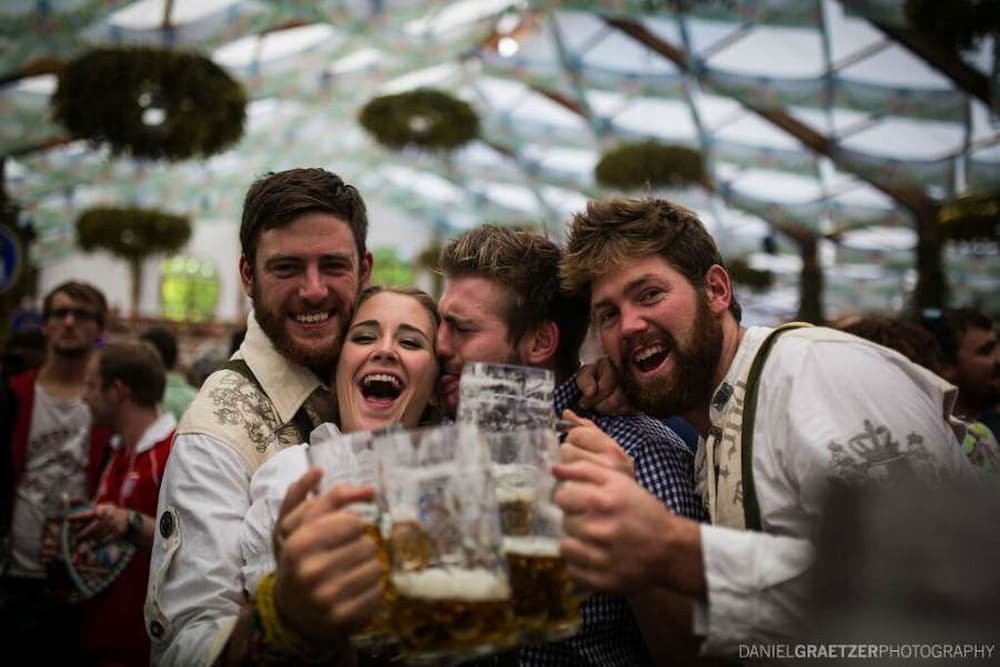

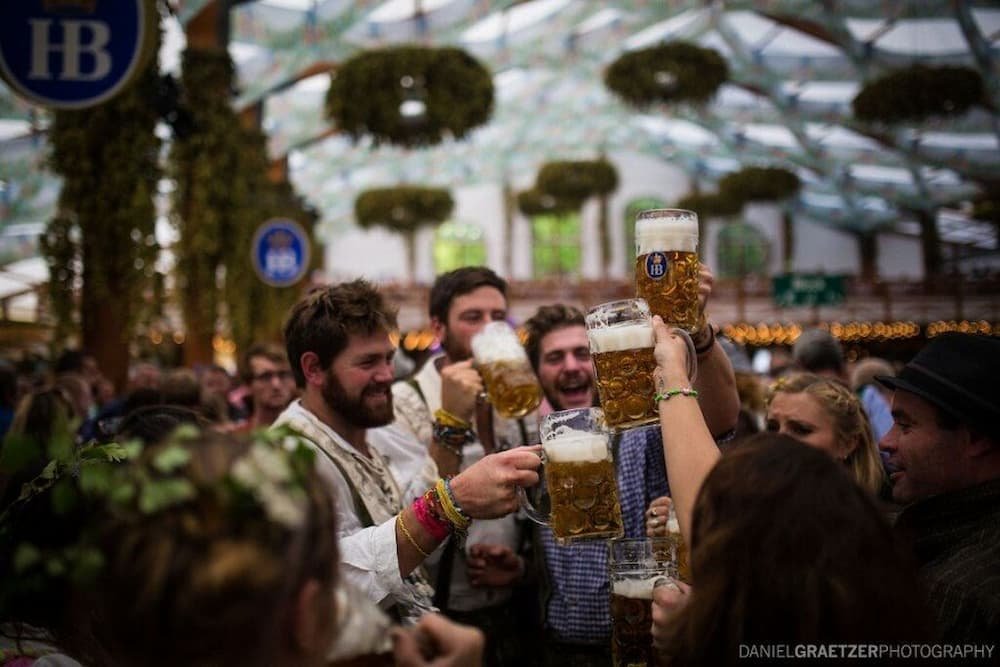





Did these photos excite you as much as they did us? It’s your lucky day, there’s still time to join in! Book your Oktoberfest adventure with Stoke Travel and join the action.
Stay with Stoke and you will sleep comfortably in a pre-erected twin-share tent, complete with an air mattress (fit for kings) and sleeping bag, all set up for your arrival. You will be fed a hearty breakfast and dinner at the campsite and Backpacker Travel has hooked you up with UNLIMITED SANGRIA AND BEER during your stay, and we all know that’s a pretty bangin’ deal! It’s usually €10 a day but you get it FREE when you book with the promo code BACKPACKER.
You will be surrounded by the craziest fun-loving folk that will guarantee you an unforgettable STOKETOBERFEST experience – so what are you waiting for?
“The Faroe Islands. Some may have heard of them recently lately, perhaps because of their prime location this past March when they were one of two places to witness the total solar eclipse. Or some may have heard of them when they defeated Greece in the Euro qualifiers – twice!
Belonging officially to Denmark, they lie (roughly) between the Shetland Islands of Scotland and Iceland. They were settled by Viking colonizers in the 9th century AD and were first subject to the Norwegian crown, followed by the Danish crown. In more recent history, they were overseen by the United Kingdom during WWII as Denmark was occupied by the Nazis. Nevertheless, many Faroese wish to strike out on their own from Denmark to become a fully-fledged independent nation.
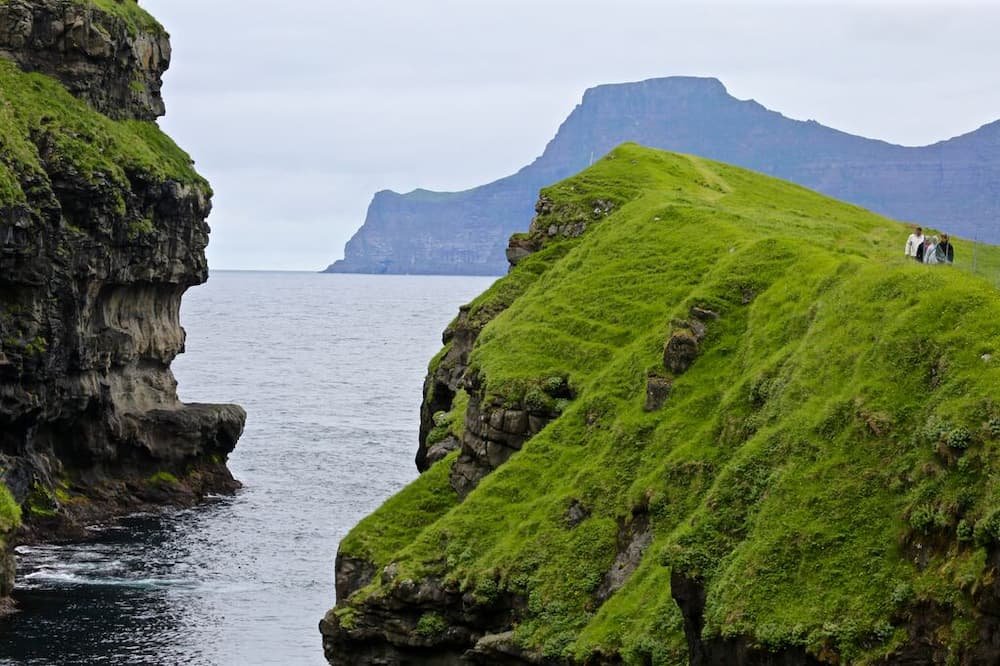
So why would you wish to go to the Faroe Islands? Where to begin? The landscape is dramatic, affording huge vistas across many of the scenic roads found throughout the islands. Many of the villages feature traditional turf houses and friendly locals. Bird spotting features highly on many a visitor’s lists with the potential to get up close and personal with puffins, gannets, and more. But what is palpable when you visit the Faroes is the sense of being at the edge of Europe and subject to the raw elements of the North Atlantic.”
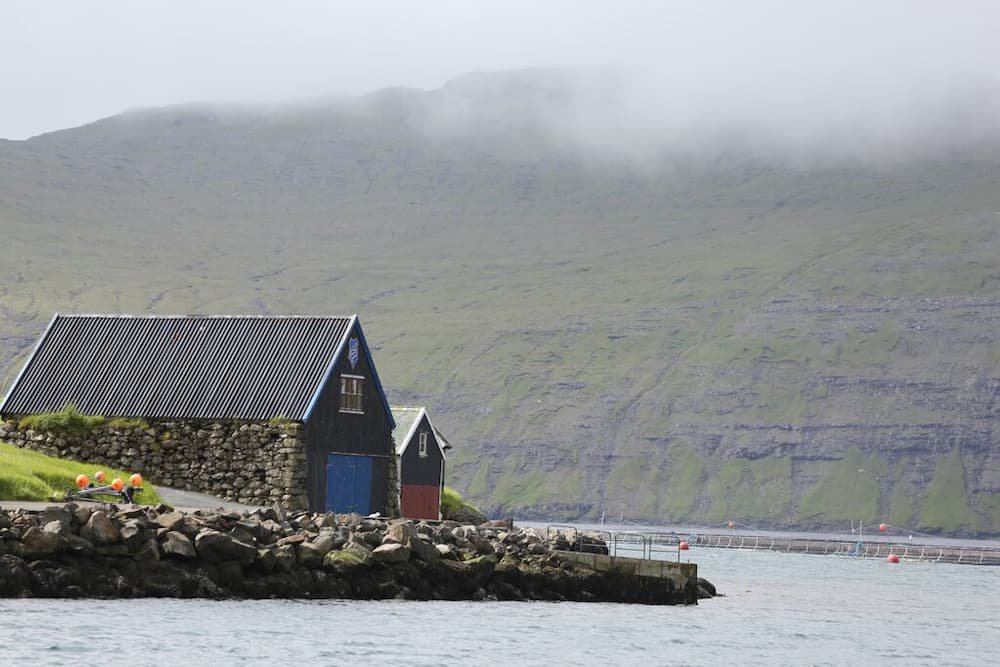

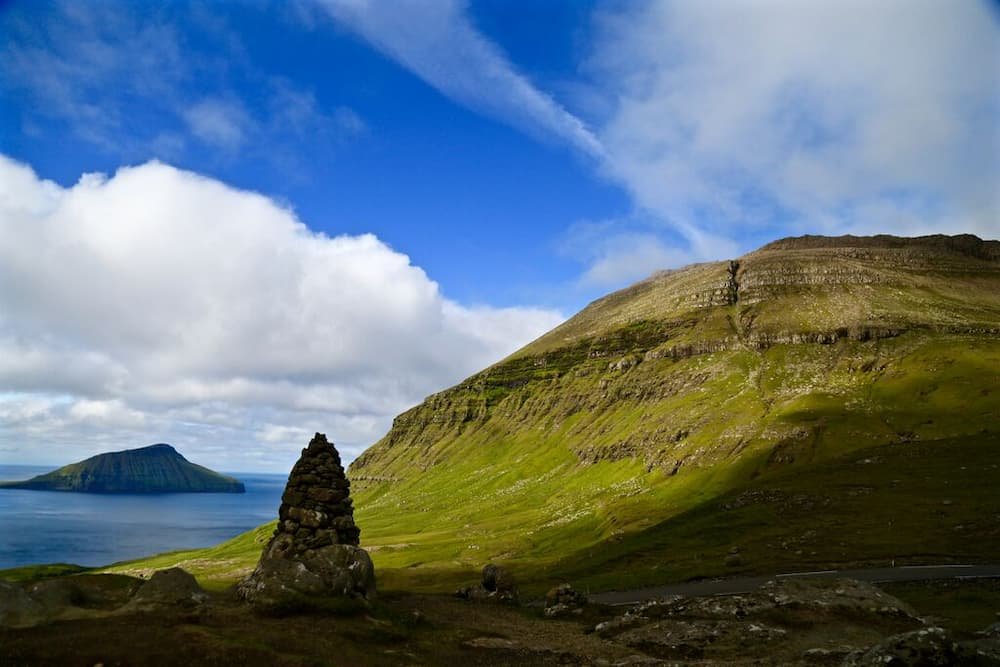



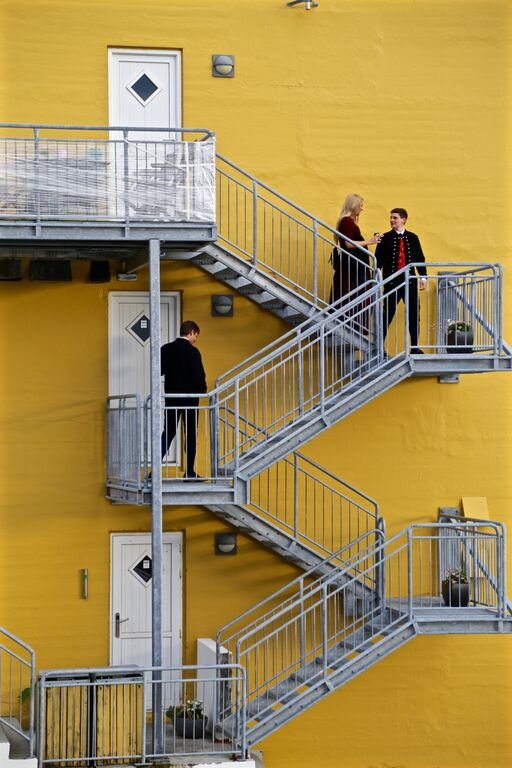
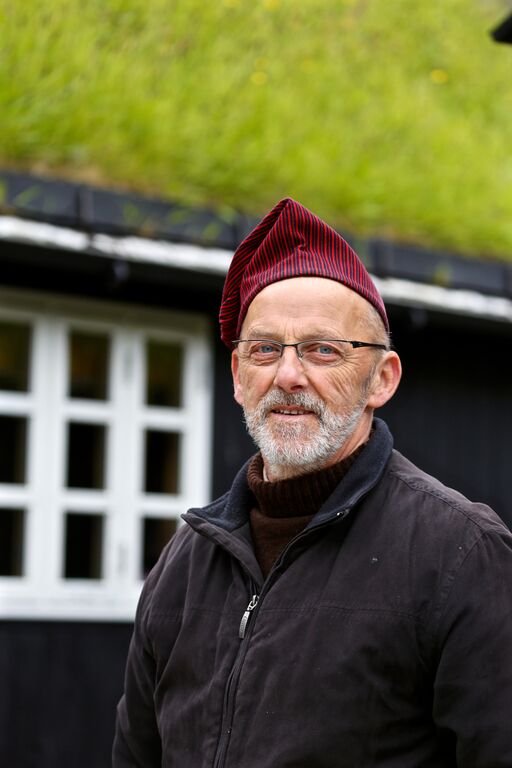

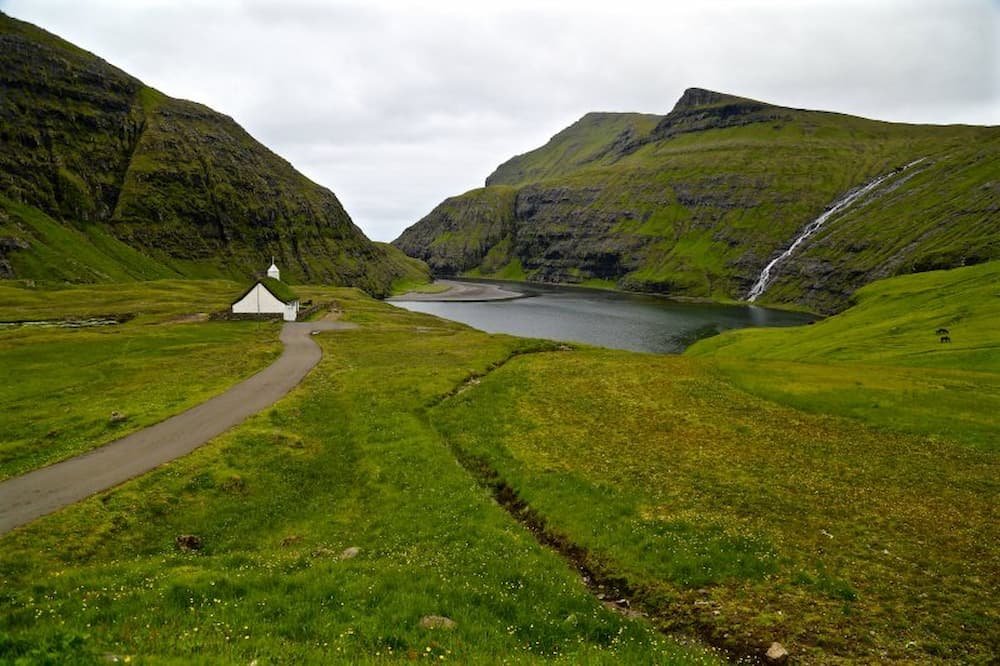

“As you can see, it is a remarkable place of breathtaking scenery and still reasonably free from high tourism numbers. Featured as a top destination in Lonely Planet for 2015, I would suggest planning your visit soon!”
I know a few foodies who like to plan their holidays around what they’ll eat, and where. Whilst I personally tend to stick to a strict diet of cooking wine and expired food stolen from the hostel when on the road, I can imagine that Europe, in general, is a great region for an authentic, hearty foodie holiday. But Spain distinguishes itself by being the only country in the world where you could plan an entire foodie fight itinerary.
What is it with Spaniards and playing with their food? Seems everywhere I go here, locals are throwing editable/potable projectiles in my direction as a sign of affection. Where I come from, a woman throwing wine in your face would be considered a bad date, whereas it’s par for the course at many fiestas throughout rural Spain. Whether it’s wine, grapes, bulls, or tomatoes coming your way at high velocity, you’d do well to leave your three-piece at home if you’re attending a traditional festival.
The next one on my agenda involves the latter: literal truckloads of squishy tomatoes painting the small town of Buñol red as the streets become the world’s biggest human Bolognese.
La Tomatina: slim, cobbled alleyways awash with red wine and red pulp, locals and visitors all dressed in white (but not for long). This is not so much a food fight as all-out food combat. Make no mistake: it’s a war out there; when you get to La Tomatina, be prepared. Be prepared not to eat tomatoes again for the next two years. Be prepared to smell like a waterlogged pizzeria. Be prepared to laugh at old ladies being hit in the face with older fruit. Be prepared, soldier; arm yourself with the following intel from a few veterans for the most awesome time:
Buñol is not exactly a metropolis. The central plaza is ground zero for the tomato fight, which officially begins when a man climbs a greasy pole to collect a leg of ham (don’t ask). The crowd is dense. If you don’t make it into the plaza, don’t worry; the fight takes place all over town – but if you want the full cultural experience, head in as early as you can manage to secure a spot.

The town will arm you: trucks will squeeze down the narrow streets, casually volleying wrinkled ketchup fodder out the back for all and sundry to hurl at their frenemies. You will not be short on ammunition.
You’ll see a lot of people wearing goggles. Join their rank if you’re prone to pinkeye – there’ll be a lot of that going around next morning. Big ones are best if you can wrangle them. Swimming goggles are less effective than you might imagine once you’re slick with juice. Sunglasses are not going to save you.

You’ll be pressed against warm bodies covered in warm wine and tomato sauce, all simmering in the hot sun: things get a little cozy in the saucepan that is Buñol. Clothes do get accidentally torn, removed, or borrowed. Probably best not to freeball either, gentlemen.
This one time, I went to a foam party with a friend. We had just come from the beach and had flip-flops on. Neither my flip-flops nor the friend was ever seen nor heard of again.

You’ll be wading through a literal foot of the red stuff. If you drop your camera, you’ll be joining the mile-long line at the cop shop afterward and most likely never seeing it again. Tie it to you, and double-check it’s not only water-proof but wine-proof (I put my iPhone in a condom – not only did it keep the phone safe, if gave all my pictures an adorable golden-age-of-cinema soft-lens effect). Leave any other valuables at home.

After the fight, locals will begin to hose down the streets and the combatants. There is also a river nearby, so you should have ample opportunity to get clean(ish) and dry off in the hot sun in time for your bus/taxi. But if you don’t want to reek on the commute home, bring something along to change into.

Now get out there to the Spanish countryside, make some friends with salad, and become a true food fight connoisseur.
We’ve hooked up with the folks at Stoke Travel to bring you a very special offer. Book their La Tomatina package as a Backpacker Travel community member and they will supply you with Free Unlimited Beer and Sangria at their campsite.
Book with the promo code BACKPACKER and boom, the drinks (and tomatoes) are on us!
Time. The main ingredient needed to create, evolve, erode, and adapt. To create tradition, habit, ritual, and culture. What’s cultured yogurt? Old yogurt. What’s cheese? Old cultured milk. What’s fine wine? Old fermented grapes.
So it’s no wonder that Europe, with its eons of history and civilization dating back to ancient Greece, is rife with culture. It’s been fermenting so long that it’s the finest wine you’ll ever taste. So if you’re lucky enough to find yourself in Europe for a season, you should drink and drink deeply of the traditions and festivals that seep through the land.
Here is a list of our favorites that will give you a local insight, an authentic experience, and a lot of fun.

Being predominantly Catholic for a long time, a large portion of Europe honors lent, where they give up something they love in the 40 days before Easter. Since the idea of self-denial is not that appealing, time has developed the tradition of having one big blowout just before these days of self-imposed discomfort. This blowout is called carnival and Venice does it pretty darned well.
The city is beautiful and the residents are classy and confident. They dress up in their old Venetian attire, there are masks everywhere, there’s dancing and drinking and fireworks, and for a few nights, this already surreal city takes on a hedonistic, ethereal air. Be sure to pack your wigs and book your Europe tour packages to get this party started.
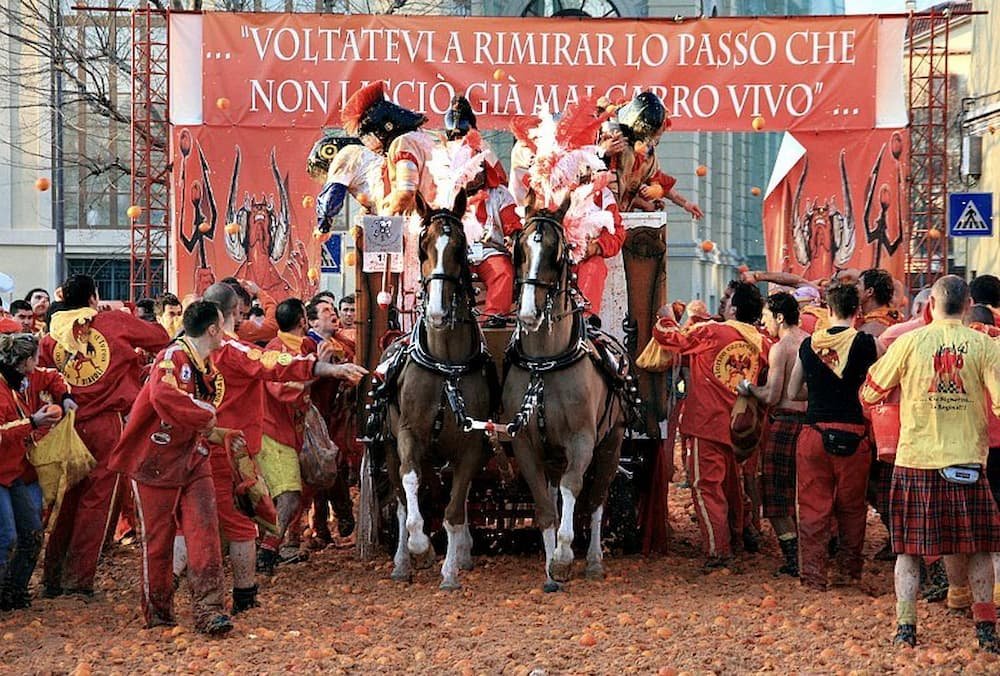
Italian women are generally considered to be stylish, beautiful, strong, and feisty. It naturally follows then that back in the day when a certain guido dignitary tried to force his way with a young commoner Violetta, she wasn’t going to give in so easily. So she cut off his head. Naturally.
How this lead to an orange fight is unclear, but it did lead to a revolution of sorts. Soon the more retiring British and the slightly sentimental French were loading their purses with oranges too. Thus, a festival was born and nowadays the battle of the oranges is a symbolic fight against tyranny.
Every year in late February/early March during the carnival period, medieval war games meet food fight in the little town of Ivrea. Moral of the story: don’t mess with a guidette.

You think you’re hardcore because you went skydiving with an instructor strapped to your back? Try making a human castle without a safety rope or net and putting a 5-year-old kid at the top. This Catalan tradition is something else. The crowd is not comprised of acrobats or stuntmen, but rather normal locals who happen to build 10m high structures with their bodies on a weekend.
It’s teamwork to the highest degree – literally. And the highest degree recorded has been a 10-tier structure! It’s not all fun and games though and people (children) have died falling from these towers. This tradition is an incredibly authentic and awe-inspiring spectacle and if you happen to be in Barcelona and experience this, you will never forget it.
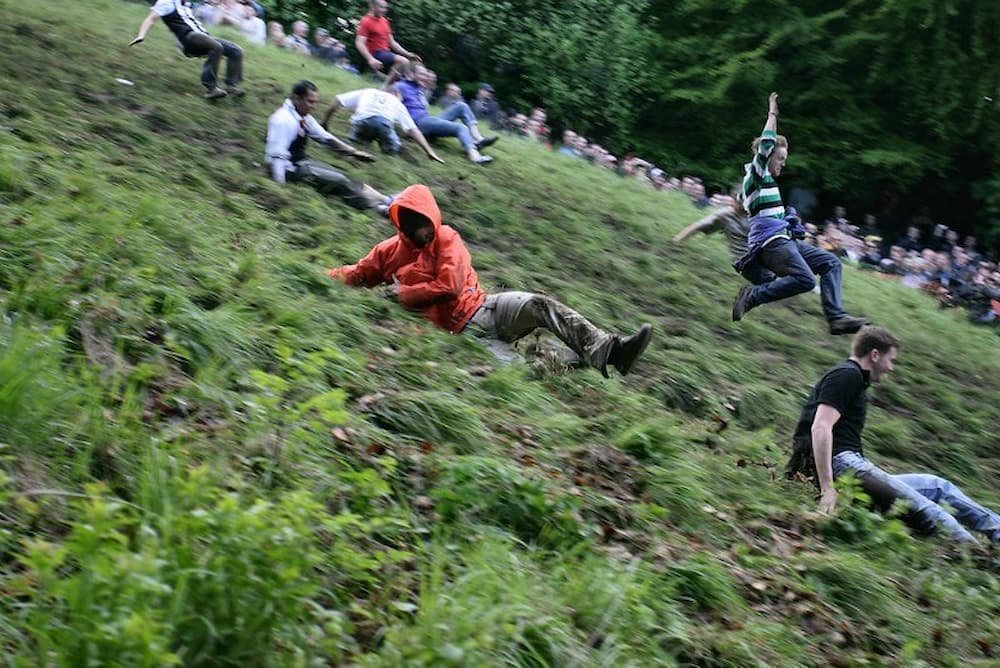
Long before most of these festivals existed, a small town near Gloucester in England was already playing with their food. Their weapon of choice? A roll of cheese. And if you wanted to be the big cheese of the town, you had to catch the big cheese they rolled down the hill. If that sounds cheesy, don’t be fooled – that their roll of cheese could reach speeds of up to 70mph!
That was in the 1500s and today the tradition continues in pretty much exactly the same manner with the same amount of injuries from people stumbling down the craggy hill, but probably with slightly more ambulance staff on hand. And the original cheese has been replaced by a foamy one to minimize the pain. The prize? A 9lb wheel of Double Gloucester cheese!
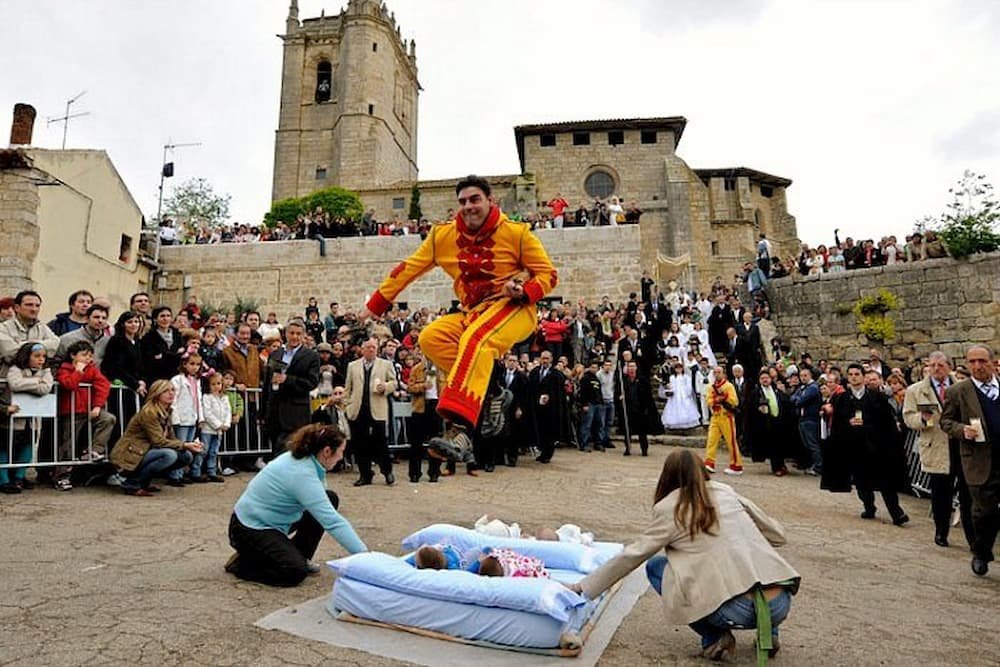
Which means… wait for it… baby jumping by devils. Yup, you read that right. From shaky origins, this tradition is believed to cleanse the babies of original sin and illness. So every year, the locals lay their babies born that year on mattresses in the street. Men then dress up as devils and jump over them.
Apparently, the Pope is trying to discourage this and encourage baptism instead. The man may have a point. Yet the tradition continues and all we’re saying is if you have an infant in that region at that time of year, you’d better hope those are some sure-footed devils! Perhaps some things are extinct for a reason and this tradition should follow the Dodo into distant memory.
Read more about El Colacho (Baby Jumping Festival) on Backpacker Travel

The French are big on a few things: wine, cheese, frogs legs, snails, berets… one could say they’ve got the culture thing down. In the town of Douai in northern France, however, it’s the size that matters and they’re big on giants.
Legend has it that there once was a man who was renowned for his strength and kindness. When the town of Douai came under threat, he miraculously appeared and fought them off. When he died, the town honored him as a giant, which is a big compliment.
Now they make massive statues and parade them through the town for three days in July and celebrate the big, burly, goodhearted man that saved their town. Worth a look, especially if you’re watching from a good vantage point with a glass of pinot noir and a hunk of brie in your face.

If you’re a no bulls**t kind of person, this is the festival for you. Yes, there’s dancing in the streets and excessive consumption of sangria. Yes, there are fireworks and passionate romances with fiery locals. But yes, there’s also the insane and adrenaline-spiking bolt from boulder-sized, steam-snorting, ground-pounding, all-leather-and-no-suede-bulls!
For a week in July, thousands storm Pamplona to test their mettle against stampeding herds through the constructed gauntlet that leads to the arena. A word to the wise – good running shoes and a shot of tequila will set you on the right path to get through this with your bones intact. Or you can just watch from the sidelines. Also exciting, plus less chance of getting a hoof to the head.
Ready to run? Check out Stoke Travel’s all-inclusive Running of the Bulls trips
Read more about San Fermin (Running of the Bulls) on Backpacker Travel.

Scottish New Year, which is on the same day as the calendar new year, but done sooo much better. Edinburgh lights up with pagan fire as the fireball swingers flow through the main street swinging their chicken mesh balls of burning tinder which are then cast into the harbor. This is the traditional bit.
Then there’s live music, loads of fireworks, tons of Scotch whiskey and ale, and a massive, world-renowned, televised party. They ring in the new year with ‘Auld Lang Syne’, which has now been adopted by the rest of the world as the new year tune of choice. No one is quite sure where the name of the song came from, but more than likely it was a heavily intoxicated Scotchmen muttering ‘Happy New Year’. Go local and get kilted up but leave your knickers at home because Scots don’t have time for timidity.
Celebrate the new year with Stoke Travel’s Hogmanay package!

Bareback baby. Just the way we like it. That’s bareback horse riding of course. What were you thinking? This is the culmination of the Sienese year and dates back to the 12th century. Do you want pride and respect from your fratellos and sorellas? Win the race. The only solace in losing the race on July 2 is knowing there is another on August 16 where you can redeem yourself.
The most ardent football fan is blasé compared to the burning passion these locals have for their horserace. The 17 districts have a jockey each to go for gold and even if the horse loses its rider, it can still win. As previously mentioned, they don’t have saddles, so staying on a horse as it gallops at top speed around the track is no small task. Are these Italian stallions daunted? Hells no! The pain of lost pride would be way worse than the pain of a broken arm/leg/neck.

The Dutch have a few things they do particularly well. Legalizing illegal things. Making cheese. Beers. Canals. Bicycle lanes. The color orange. And partying on boats to celebrate their current regent’s birthday.
At the end of April every year, orange is the new black and thousands of Dutchies and every other nationality under the sun take to boats in Amsterdam armed with beer and clad in their national color to celebrate their Netherlandiness. There are fireworks, hash cakes, pancakes, and croquettes and there’s a whole lot of fun to be had.
Do some Amsterdamage with Stoke Travel’s King’s Day trip

The Italians aren’t the only ones with attractively fiery tempers, and at this incredible festival in Valencia in March, we’re like moths to a flame. In the city center on every main corner, you can see giant effigies that take months to build. Everything’s a little tongue-in-cheek depicting political or social stereotypes of the year.
On the eve of March 19, they burn these stigmas to the ground in the celebration of spring and a new beginning and positivity. It’s astounding. Do you know how you get mesmerized by a flame? Imagine a flame the size of a building! Health and safety can go hide in a corner, ’cause the Spanish are gonna burn shit and we’re invited.
Go up in flames with Stoke Travel’s Las Fallas trip

Another Spanish festival (’cause these guys are the pros when it comes to original street fests). Ever wanted to partake in a food fight? Got a particular gripe with an acquaintance? Invite them to this festival in the tiny town of Buñol and you can vent your frustrations and they’ll be none the wiser.
The masses gather along the main streets into the main square, begoggled and itching to get their hands on the red fruit known as a vegetable. People compete to climb a slippery pole to reach a pork leg (don’t ask) and once someone gets it, the canons sound, and the festivities begin. Truckloads of squishy tomatoes are distributed through the crowd and the world goes red as the tomato war begins. Passive-aggressives need not apply.
Join one of the biggest food fights on Stoke Travel’s La Tomatina trip

Gone are the days of Elizabethan London where the locals were white, British folk. Now London is a myriad of cultures and nationalities all living and breathing and moving together. And a brilliant effect of this multiculturalism is the development of exotic and exciting traditions stemming from far-off roots but becoming ingrained in the local flavor.
One such tradition is Notting Hill Carnival, which has its roots in the Trinidadian community of west London. It started off as a small parade to show off the skills of the steel drum players, but as soon as the local Caribbeans heard these beautiful sounds that transported them back to their original home and culture, they took to the streets to boogie. Now this carnival is the biggest and most colorful of its kind in Europe with beautiful costumes, parades, music food, and color. This happens at the end of August each year and is an experience worth riding a packed underground for.

Eine kleine stein. Or more. This is the motherload. The festival to beat all festivals. Culture meets oompah-loompah bands meets funky, folksy outfits meets gallons and gallons of Germany’s finest beer.
There’s lovely roast chicken and steamy bratwurst and candied nuts and pretzels! Everywhere! There are Germans who, let’s face it, have a rep for being quite stern, but at this festival, there’s none of that. There are rosy cheeks and singing on benches and swaying to the music and many many Prosts (cheers in German). This is the perfect mix of culture and drunken fun. Plus there are rollercoasters. Life can’t get much better.
Join the world’s biggest beer festival with Stoke Travel’s Oktoberfest trip

This festival is quite modern and only dates back to the 18th century. It was originally just a piss-up when sailors and soldiers came home from the Napoleonic war. Gradually the locals added things and created their own festival. Now they dress up as Vikings, parade through the streets, sing songs, visit school and then burn a bloody great Viking ship for funsies. There’s a Guizer Jarl (head Viking) and Jarl Squad (Viking gang) and they make their own costumes and practice their march and put a load of effort into this little-known festival. You can catch the action 24 days after Christmas. It’s sure to be a merry time – just don’t forget your horned helmet and drinking horn!
And there it is. The complete cultural picnic basket of festivals for your enjoyment, filled with oranges, Viking horns, fire, tomatoes, cheese, masks, face paint, loads of beer, and all carried by a devil-suited giant riding bareback on a bull, skipping over babies and singing Auld Lang Syne.
Our recent trip to the Bahamas was predominantly for the Junkanoo festival that takes place in the early hours of the morning on both Boxing Day and New Year's Day. If you would like to find out more information about the festival I encourage you to check out the listing I wrote for Fest300.com – Junkanoo Festival. You can also view more of my photos here – Rushing to Junkanoo.

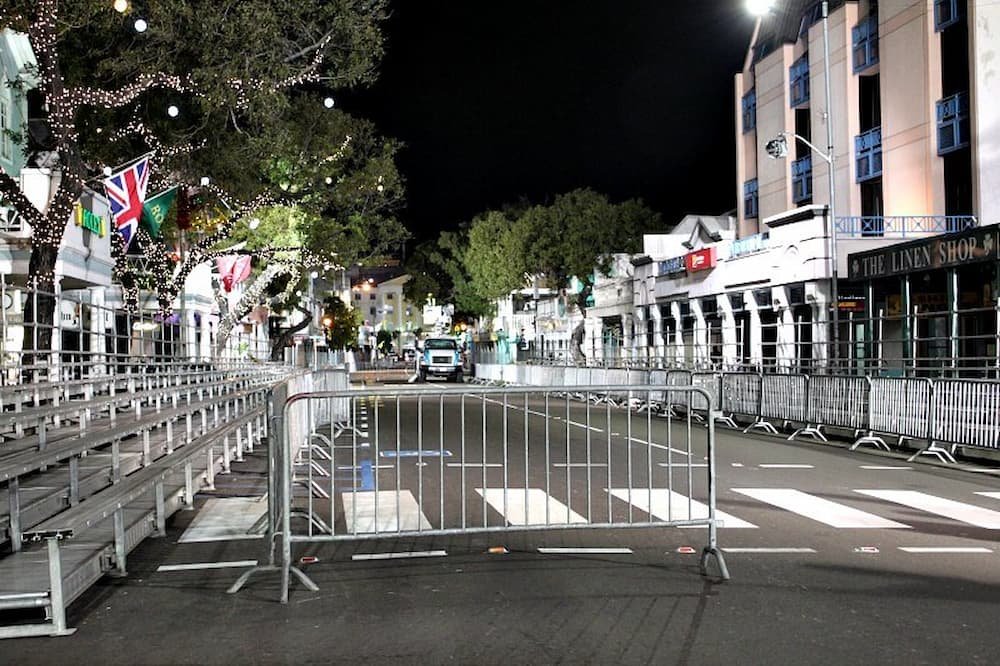
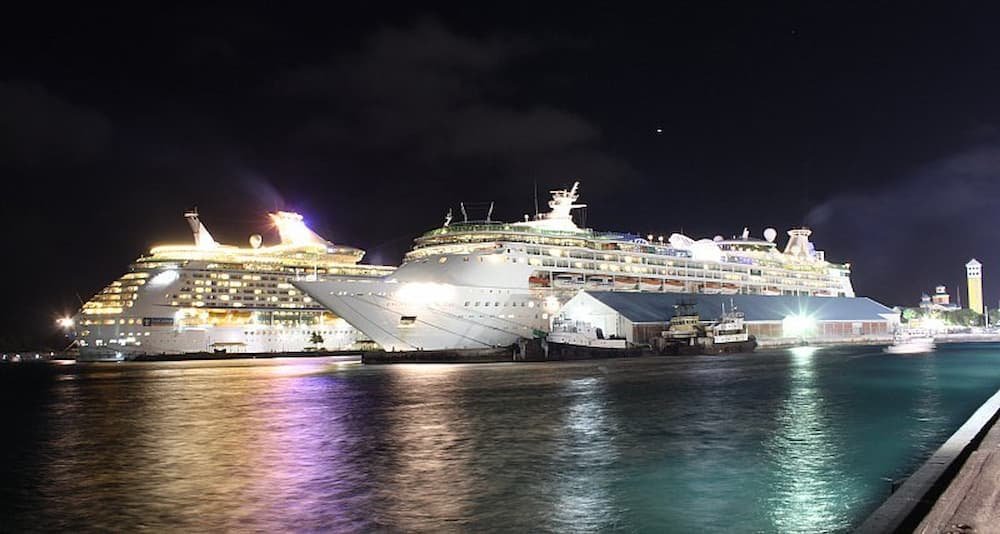





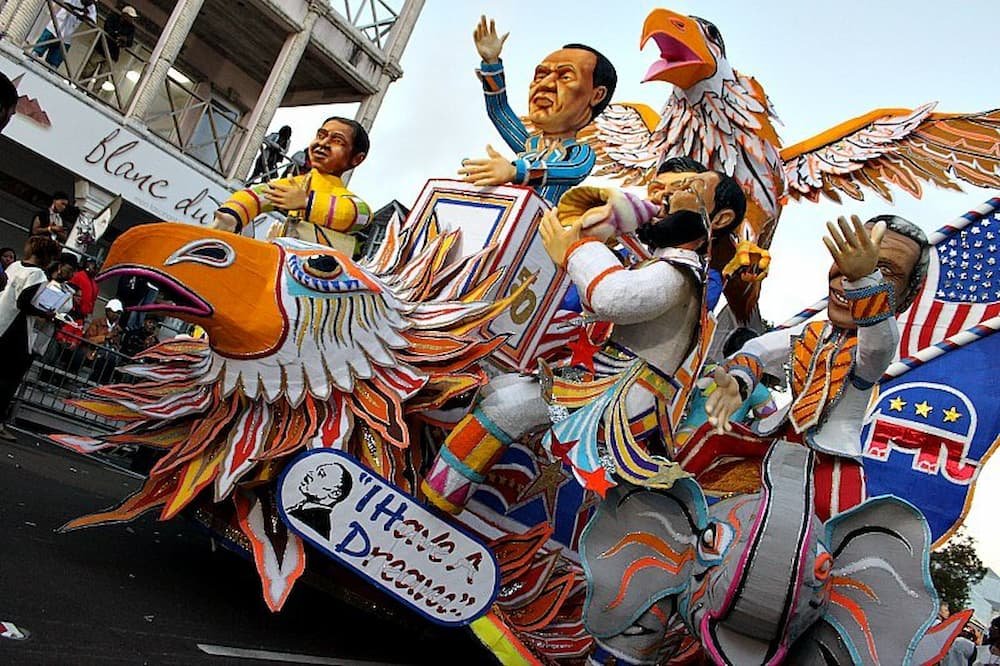







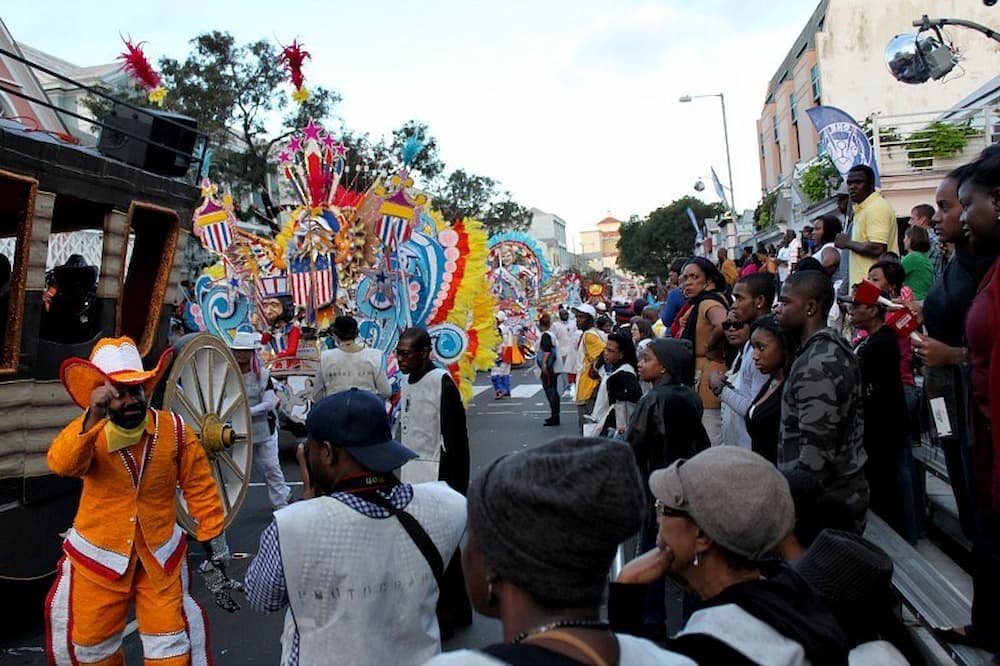


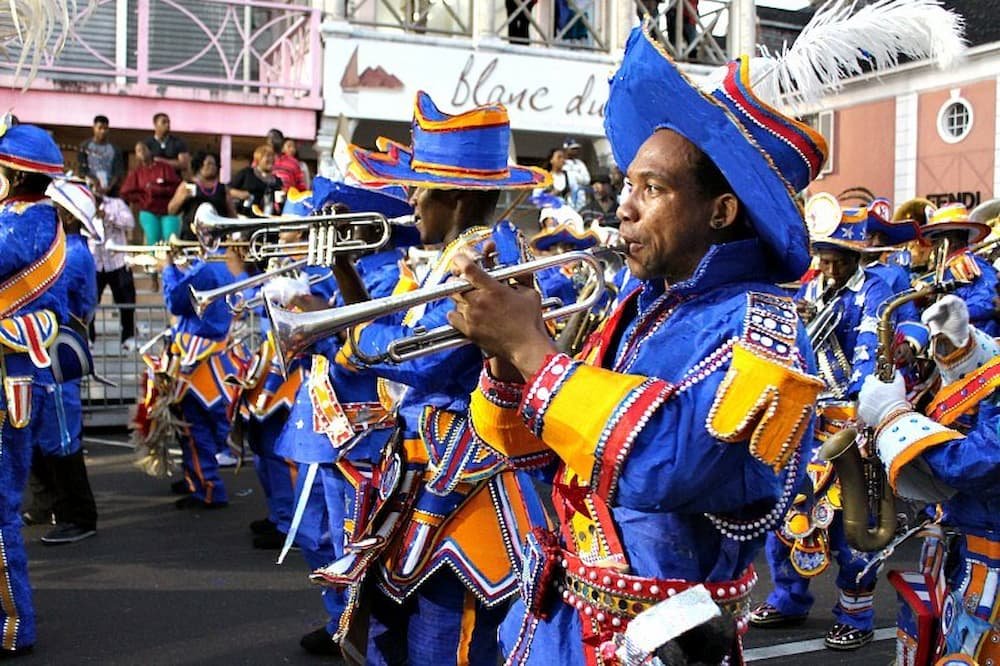


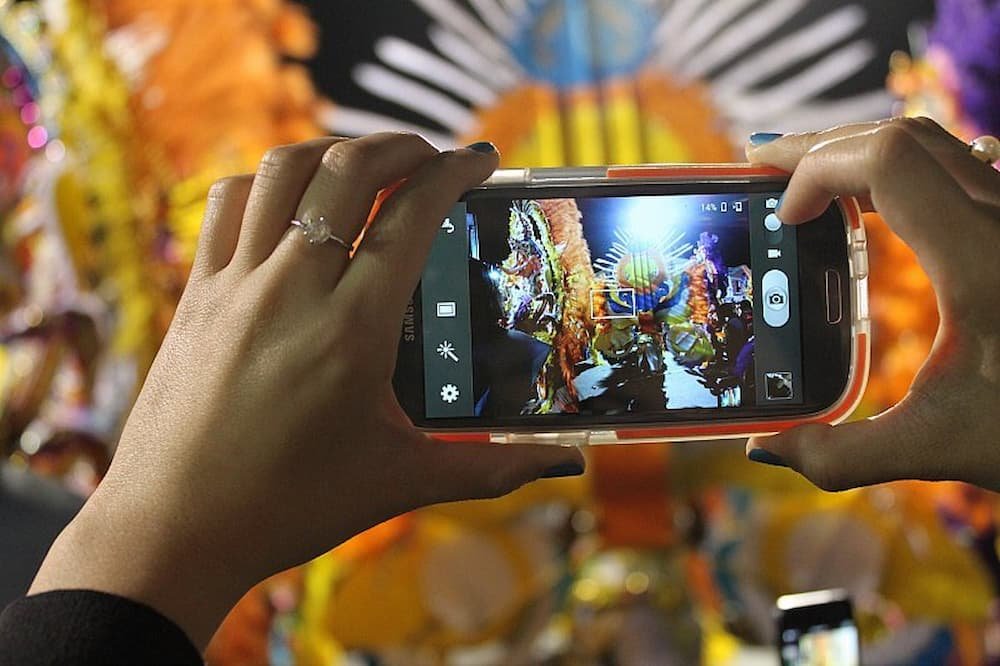







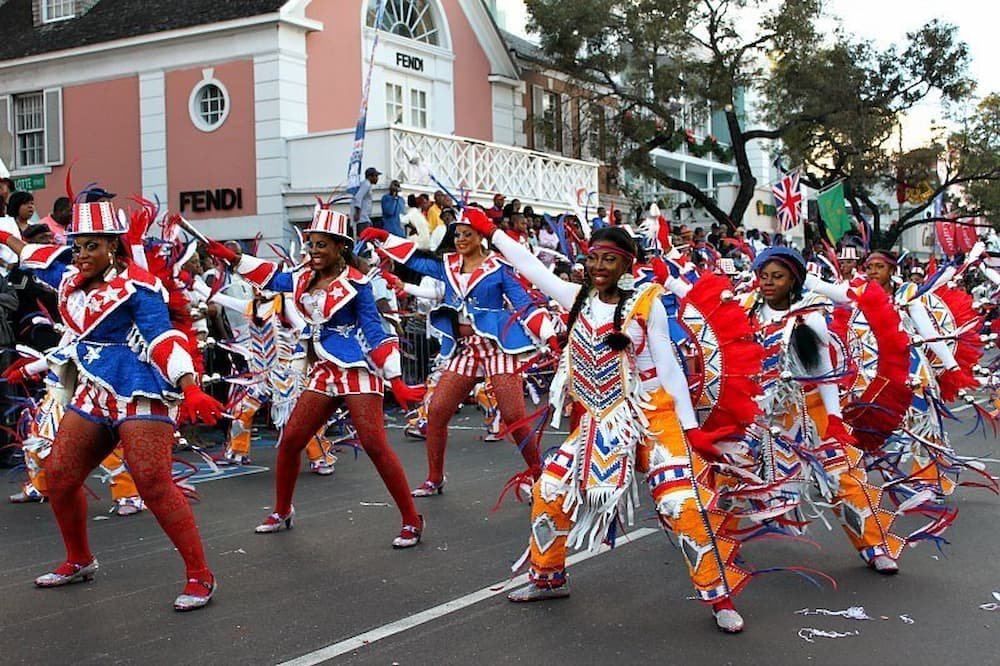

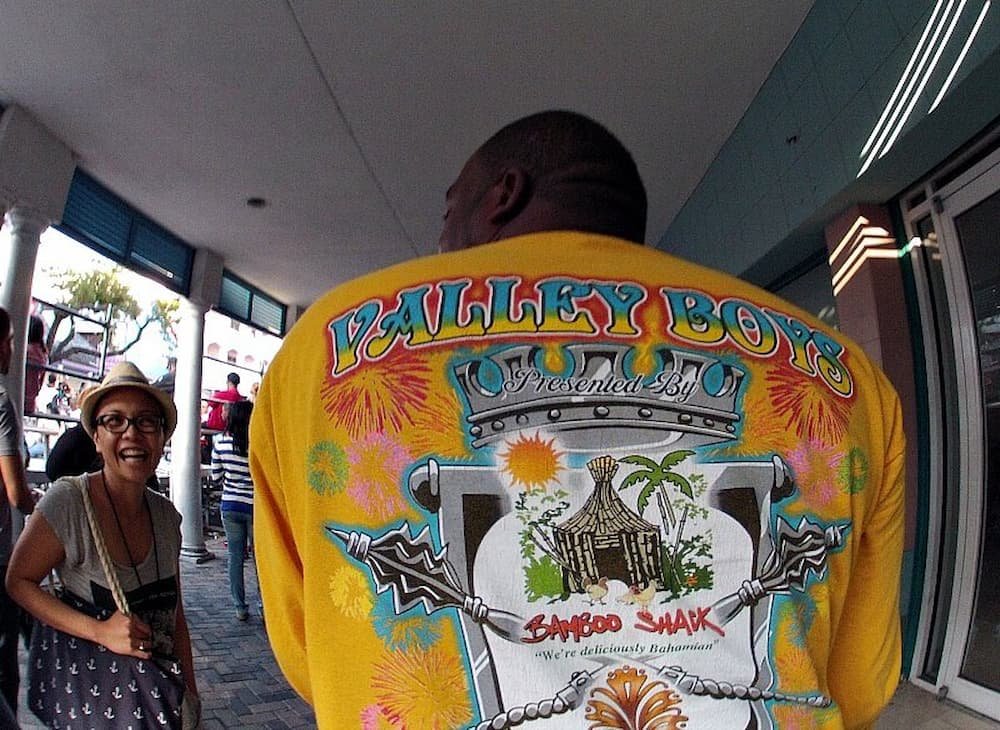
Want to start your New Year with a splash – literally?
Thailand does exactly that with its Songkran festival, held annually from 10 April. Depending on where you’re at, the festivities can continue for between six to ten days. Falling during the hottest time of the year at the end of the dry season (temperatures can rise to over 100F or 40C on some days), it’s no wonder that the country ushers in the New Year armed with water guns.

Originally held only in the north of Thailand, the festival is thought to have been introduced by the Burmese, who adapted it from the Indian Holi festival. Traditionally, this was a time to visit and pay respects to elders, including family members, friends, and neighbors. The festival spread across Thailand in the mid-20th century; however, the most famous Songkran celebrations are still in the northern city of Chiang Mai, where it continues for at least six days.
The main celebrations, in the capital, focus on bathing rites of replicas of revered Buddha images originating from various provinces in the north, south, east, and central regions, interspersed with traditional food and dessert-making demonstrations and cultural performances. The opening ceremony will take place on the 10th of April, at Phra Chetupon Wimol Manklaram or the Temple of the Reclining Buddha.
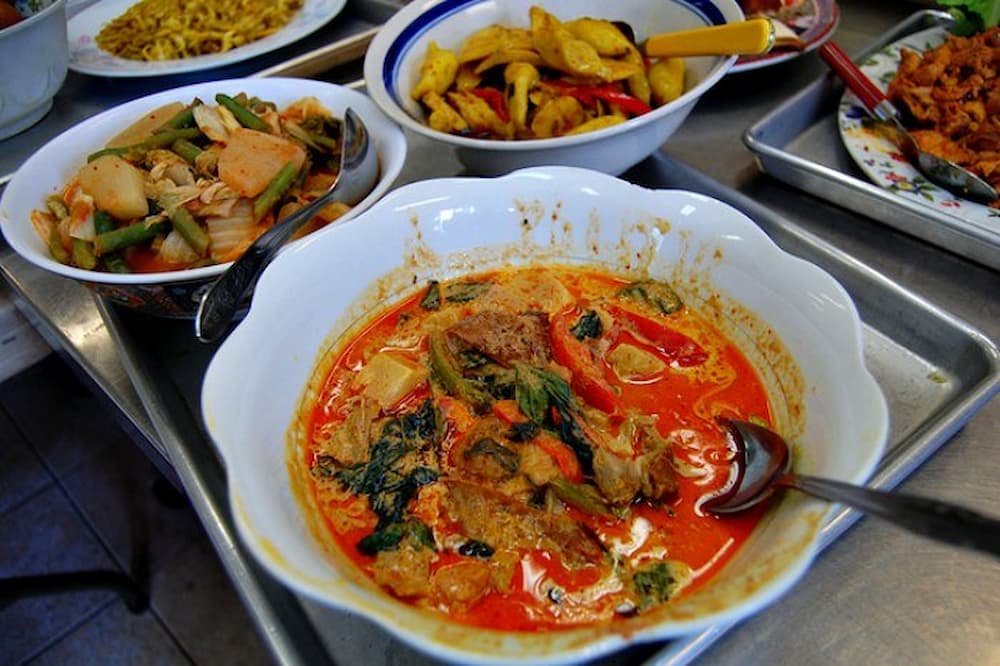
The most obvious celebration of Songkran is the throwing of water. You will find many Thai people roaming the streets with containers of water or water guns (sometimes mixed with mentholated talc), or positioning themselves on the side of roads with a garden hose to drench each other and passersby. This, however, was not always the main activity of this festival. Songkran was traditionally a time to visit and pay respects to elders, including family members, friends, and neighbors.

A key part of Songkran is held in a wat (Buddhist monastery), where statues of Buddha are cleansed with water and fragrances. It is believed that doing this will bring good luck and prosperity for the New Year. In many cities, the Buddha images from all of the city’s important monasteries are paraded through the streets so that people can toss water at them, ritually ‘bathing’ the images, as they pass by on ornately decorated floats.
In northern Thailand, people may carry handfuls of sand to a nearby monastery in order to recompense the dirt that they have carried away on their feet during the rest of the year. The sand is then sculpted into stupa-shaped piles and decorated with colorful flags.

But for most tourists and Thais, Songkran is essentially about a no-holds-barred water fight, with hundreds of people roaming the streets with garden hoses, water guns, and buckets filled to the brim with water ready to soak anyone (no exceptions!) that dares to come close. Sometimes the water is mixed with mentholated talc, which makes for one messy mixture!

The water throwing was originally designed to capture water after it had been poured over the bathed Buddhas for cleansing. This blessed water would then be gently poured over one’s shoulder, to bring him or her good fortune.
Nowadays, the emphasis is on fun and water-throwing rather than on the festival’s spiritual and religious aspects, which sometimes prompts complaints from traditionalists. In recent years there have been calls to moderate the festival to lessen the many alcohol-related road accidents as well as injuries from water being thrown in the faces of traveling motorcyclists.

Like many other cultures, some Thais make New Year resolutions – to change a bad behavior, or to do good things. Songkran is a time for cleansing and renewal. Besides washing household Buddha images, many Thais also take this opportunity to give their home a thorough cleaning.
The traditional greeting is (sa-wat-dee pee mai), meaning “Happy New Year”. Sawatdee is also used for “hello” or “goodbye”. However, most people say (suk-san wan Songkran) meaning “Happy Songkran Day” since pee mai is more often linked with the first of January.

Definitely a New Year with a difference and be prepared to get very, very wet!
Much better than we’ve been told.
A country where people are crazy about Barca (or Real Madrid- football); they greet you very affectionately and cordially with a “welcome to Iran”.
Strolling around the impressive bazaars in Teheran or Isfahan while taking some pictures, people came to shake hands, ask me where I was from and offer me a tea, food, or even their homes; ordinary, anonymous people who made all possible to make you feel comfortable in their country.
The most interesting were the chats, which they started, and step by step they let you know about their country and lifestyle, very usual except for one issue: women. That’s without a doubt a negative point according to our westerner point of view.
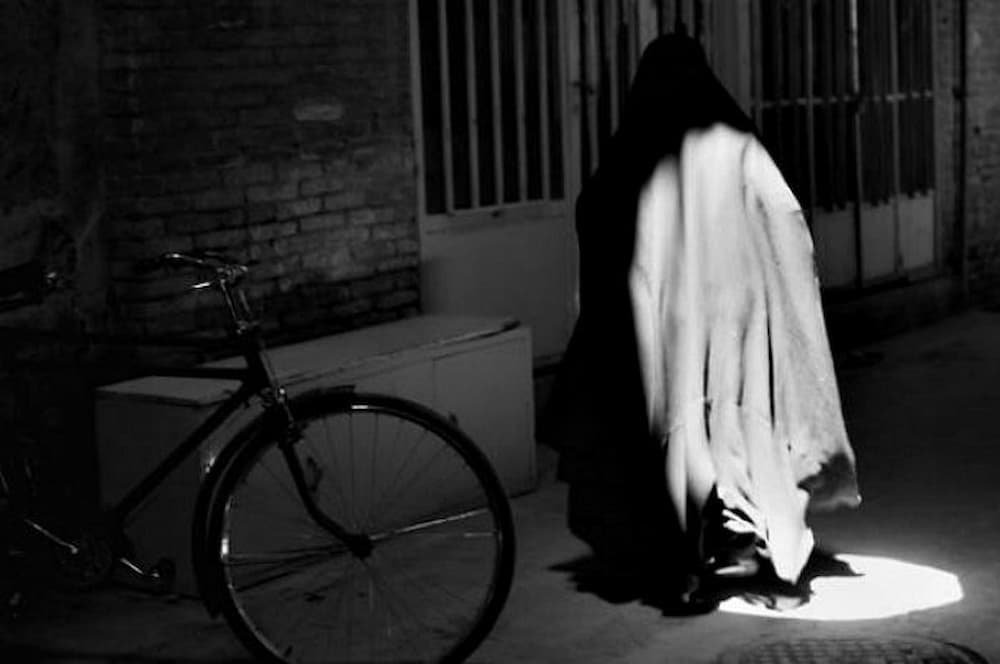
I am illiterate when it comes to the Muslim world, but I think that we have to consider their lives from a double point of view: a critical one and an understanding one.
The critical point of view is all about censure and lack of freedom, especially for women, who cannot decide whether they want to cover their heads with a scarf or not, or what clothes to wear. Some of those women don’t want to live that life and feel obliged to it. I chatted with some women, even together with their husbands, and they said they were fed up with living under such oppression. At the same time, and that would be the other point of view, I also met people who wanted to live that way and be respected. It was like saying everybody should take care of their own business, we’re like that and that’s the way we want to be.
However, I could never accept this way of life simply because I wasn’t born there. If I had been born in that country and had a very strict education, maybe I would have another opinion. That’s the reason why I think it’s not fair to judge individuals, maybe it’s the system we have to judge.
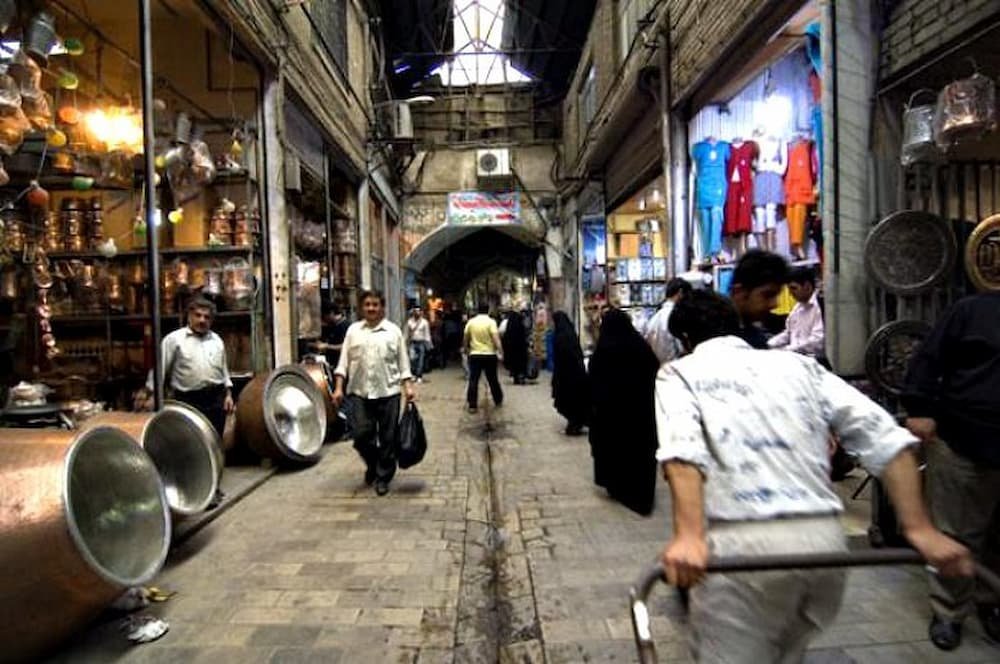
You can clearly see who prefers what, as you see women dressed totally in black, only showing her eyes, and women with more “western” clothes, with the scarf not totally covering their heads, and wearing make-up. Unfortunately, sometimes they’re reprehended for that.

As in many places, there are no bad persons, but there may be bad governments and reproachable living conditions. However, Iran as a country and its people are delightful, the Persian region offers infinite possibilities and routes to discover a country rich in culture and excellent people.
Living in San Francisco we are lucky enough to live in such a mild climate but the winter’s chill is not something I personally look forward to. Yes, it is a magical feeling wandering around Union Square, the Christmas decorations lit up in every shop front, people laughing as they stumble around the ice skating rink and the general holiday spirit that fills the air, but coming from Australia, I still crave some good old fashioned beach action. So this year we decided to escape the cold and jet off to the Bahamas for Christmas.
As I mentioned in my earlier post the decision to travel to the Bahamas was decided based on certain criteria. Most importantly, due to our fascination and passion for festivals… and we were not disappointed but more of that in another post.

Last year I decided to make an effort to stick to some specific airlines in an attempt to work on my frequent flyer miles and improve my status. Well, after a couple of trips back to Australia in 2013 I reached Silver Status with United Airlines and this would be my first trip traveling under that status. Our itinerary had us traveling from San Francisco via Denver and Newark to Nassau. The connections would be tight but the cost of the flight made it worth the risk…. or so we thought.
We were delayed out of San Francisco resulting in a 20-minute connection in Denver. To make matters worse, it had been snowing so we had to make a run for the gate. Luckily we made it, just in the nick of time and the remainder of the journey was smooth sailing since New York was experiencing unusually warm weather. That is until we arrived in Nassau. After clearing customs we made our way to the baggage carousel to collect our one and only checked bag. You know where this story is going right – yup, after watching everyone collect their bags we had nothing.
There are many lessons that can be learned from travel mishaps and the biggest lesson learned from this was to always pack some spare clothes in your carry-on bag. I am currently working on a post about lost luggage so I won’t go into too much detail here but let’s just say that I wasn’t going to spend much time on the beach in pants and a jacket. I needed to buy some shorts since our bag was set to arrive the next afternoon.
Our bad luck was soon forgotten as soon as we left the airport looking for a taxi to take us to our hotel. While we had been waiting for our bag to arrive the rest of the passengers on our flight had been grabbing every available taxi which left only a limousine for us. The chauffeur explained it was our lucky day and said that he would drop us off at our hotel for the same cost as a taxi… SCORE!

We spent four nights staying at the Melia Nassau on Cable Beach and set out on our relaxation quest. All I wanted to do was relax at the beach or by the pool, read a book and write.
One of the main things that grabbed me from the very start of our trip was how “American” the Bahamas seemed to be, especially considering that just 40 years ago it was part of the British Commonwealth. I guess the influx of American tourists arriving by the boatload every day has strongly influenced the country.
Walking around downtown Nassau we couldn’t help but bump into tourists coming off one of the many cruise liners docked in port. Clearly this has played a massive role in shaping the country since declaring independence. You don’t need to look far to find a McDonalds or a Starbucks. Even the ATMs let you take out US dollars, which are accepted at every store and even on the local buses or street vendors.
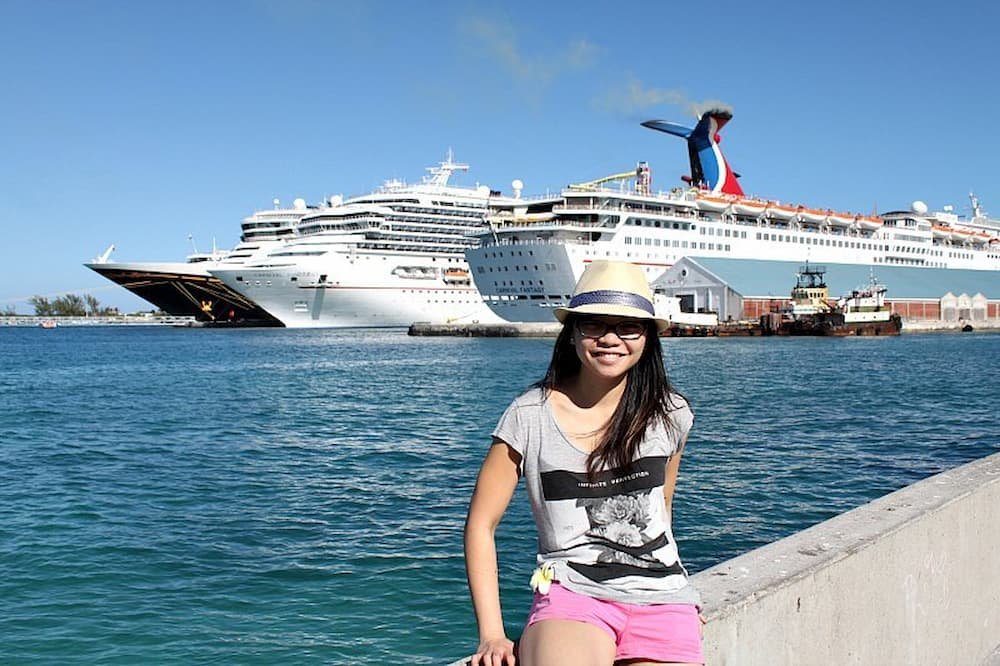
Don’t expect a cheap holiday in the Bahamas – everything needs to be imported and with the current tax system prices are inflated. Then on top of that, be prepared to see a 15% service charge mandatorily added at the end of your bill. Let’s face it, you are not coming to the Bahamas for a cheap trip but if you are looking for magnificent beaches, luxurious hotels, luxury yachts, plenty of comfort food and unending watersports the Bahamas has you covered.
The major drawcard over the last few years has been the incredible Atlantis Resort on Paradise Island. This 5-star resort is perfect for families with so much on offer for the kids including a 141-acre water park and marine habitat. Of course, the adults haven’t been forgotten either with tennis courts, a golf course, 21 restaurants, and 19 bars. Also with gambling being legal in the Bahamas, it seems like every major hotel has its own casino.
One of the attractions that we were keen to check out was the Dolphin Experience. Having just watched the controversial documentary Black Fish, I was a little hesitant about visiting this marine center located just off Paradise Island on a blue lagoon.
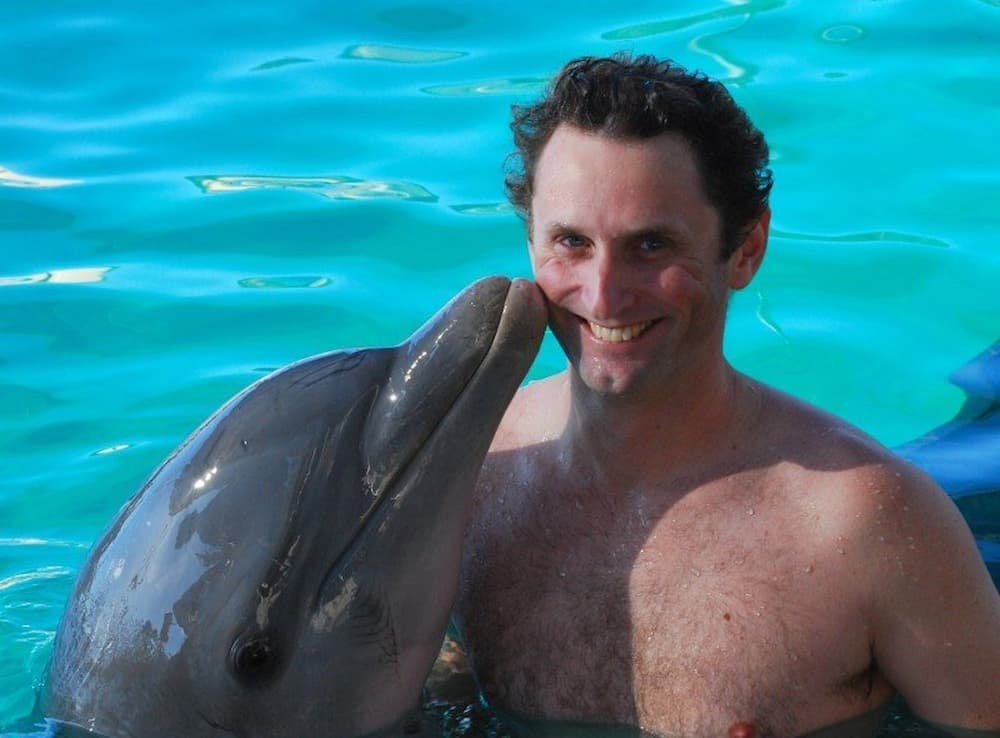
Again I want to give this experience the attention that it deserves so I will be writing a full post outlining our private tour around the facilities in a future post. For now, let me say it was one of the best animal encounters I have ever had and I assure you that these animals are well taken care of in a wonderful environment. Lisette was even lucky enough to get in and swim with the original star of the movie Flipper.
One of the best meals we had in Nassau was at Frankie Gone Bananas. This local restaurant is situated in Fish Fry, a small square of Bahamian restaurants just to the west of downtown. You can take a local 24-seater bus from Cable Beach or downtown for the bargain price of $1.25 each way.

The staple food in the Bahamas is the conch (pronounced conk). The best way to have it is as deep-fried conch fritters or in a conch salad. I would describe the taste as similar to calamari. Fish Fry is a great place for dinner, with a decent selection of restaurants and bars serving fresh food. One warning is to be patient though – service in the Bahamas is notoriously slow, as we found. Also be aware that the majority of restaurants (except Frankie Gone Bananas and Twin Brothers) don’t have a restroom, although there is a public toilet just across the road.
When in paradise, drink a tropical cocktail! Anything with rum is acceptable here but the Bahama Mama was our cocktail of choice on this trip. Here is the recipe – Bahama Mama Recipe.

The main reason we chose to visit the Bahamas was for the Junkanoo festival that happens on Boxing Day and New Year's Day in the early hours of the morning. For the first parade, we made a rookie mistake and arrived waaaay too early at around 7 pm. We went and purchased our tickets for the bleachers and met our new best buddy Geron.
Geron is a local Bahamian who was working at the Junkanoo ticket sales office and he was so amazingly helpful to us. He gave us all the tips for where to sit, explained everything I needed to know about the festival for my Fest300 article, and even went so far as to generously give us tickets for the New Year parade.

Keep an eye out for my next post which will be a photo journal from both Junkanoo parades, including a video I am currently editing. If you happen to be in the Bahamas over the Christmas/ New Year period I strongly suggest that you check out Junkanoo as it was the best carnival parade I have ever been to.
If you want to get close to more marine life, the Bahamas is also a great place for snorkeling or scuba diving. We flew to another island, Grand Bahama, and stayed in the main town, Freeport. There, Lisette spent one afternoon diving, where she checked out a little wreck, and saw a lot of fish and a ray – but the highlight was a close encounter with a black tip shark, which came close enough to pat and smile at. If you’re lucky, you can see anything from a lemon, bull, tiger, hammerhead, Caribbean reef, silky, nurse, or black tip shark. You never know what could suddenly appear from the deep…
There are multiple dive shops all offering the chance to swim with or even see shark feeding. We chose a small operator – Jerry and Presley have been running Caribbean Divers in Freeport for 13 years. While there are only two of them doing everything from driving you to/from the hotel, helping you suit up in scuba gear and taking you out on the dive, they were incredibly knowledgeable, professional, and reliable the entire time. And it made for a much more memorable and personal experience swimming with only four other people.
When our trip had come to an end we were both pretty tired and started to prepare ourselves for getting back into the daily routine that we had left behind. Unfortunately, the story doesn’t end there….
On arrival at the airport for our flight home, we were told that the flight was delayed. First just a little, then an hour, and finally when it did arrive they discovered a flat tire so ended up canceling the flight altogether. Right about this time we had been watching the news reports of a massive blizzard that was due to sweep across the east coast of America.
To cut a long story short we were given a hotel voucher and some food vouchers and told to come back the next day. Luckily I had a friend at United who helped rebook us via Newark. By the time we arrived in Newark, the snow had started and we were getting worried we wouldn’t make it home. Fortunately, after nearly two days of stunted travel we were sitting in first class (got an upgrade) and en route home, with memories of the paradise we had just left.
Want to see more pictures from our trip? Read this: Junkanoo Festival Photo Journal
Teaching English as a Second Language is an undeniably great way for aspiring travelers to both fund their travels and experience a new culture in an intimate way without spending a fortune.
Rather than spending a year or two saving up money to get you on the road, many schools around the world go so far as to pay for your flight and accommodation in addition to your salary – making it a lucrative way to really immerse yourself in a country you might not otherwise have gone.

China has undergone a truly massive boom in demand for English teachers, and this means that potential teachers are almost spoiled for choice when it comes to choosing their employer, their location, and even the kind of teaching they’d like to do.
Where South Korea (a country I also spent two years teaching in) has begun to prefer inexperienced (and therefore lower-paid teachers) and offers little real opportunity for advancement within a company, many Chinese companies are desperate for experienced teachers who wish to move up the ladder into supervisory or training roles.
Whether you’re working with young kids for companies such as American Eagle, Disney English, or First Leap; preparing teens for life abroad at an IELTS training school; shaping bright young minds at a university, or teaching corporate English for one of the many global companies that call China home – there’s a real variety of teaching opportunities available that you won’t find elsewhere.
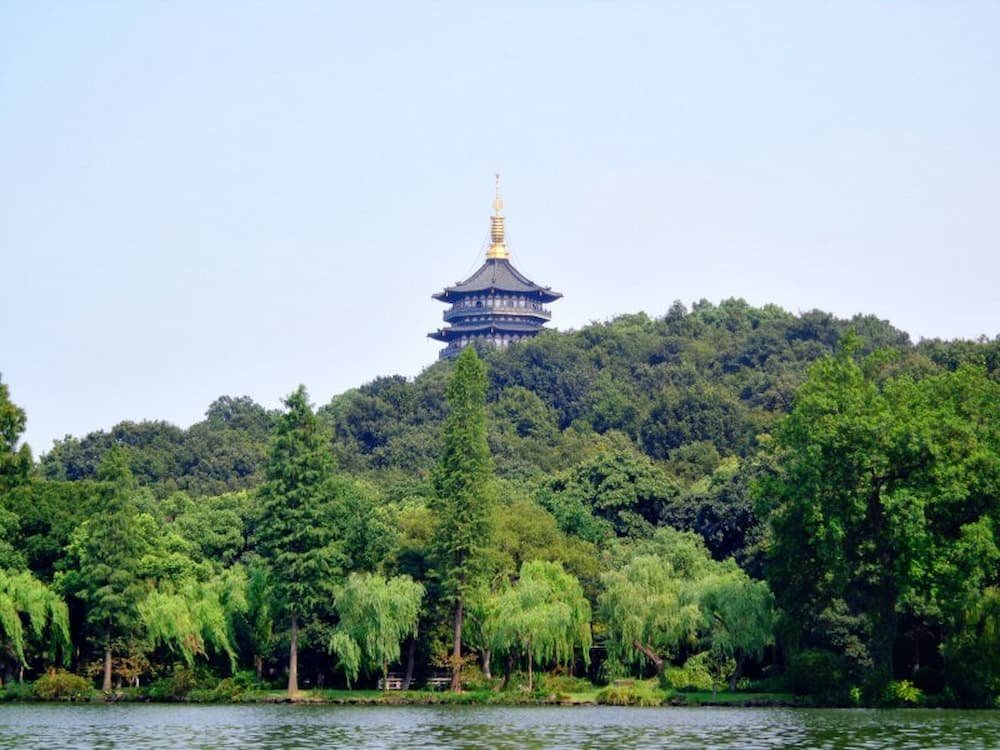
With demand dwindling in traditional ESL markets such as Japan and South Korea, China is bursting with schools both large and small looking to hire a native speaker. While a Bachelor’s Degree is technically still required to get the teaching visa, there’s no shortage of schools willing to bend the rules and turn a blind eye if it means securing the status symbol that is a native speaker.
While opinions on the massive influx of laowei (foreigners) are understandably divided, China affords you the opportunity to lead the kind of lifestyle you might not have ever imagined possible when you graduated with that degree in theater or international relations.
In the space of two years in China I took on roles such as actor & screenwriter for a Chinese sitcom, marketer, events planner, tutor, cricket player, model, and token white guy. It’s hard to walk the streets of one of the country’s less cosmopolitan cities without being stopped for a half dozen photos with excited locals – even if you’ve got an ugly mug like mine!
I had friends who were contestants on game shows or anchors on English language TV, friends who modeled, friends who were paid to wear suits and stand at parties, and everything in between; and while I certainly felt this ‘celebrity culture’ in South Korea and other countries, I can’t think of many other places in Asia where being white can be such a lucrative little earner on the side.
China is so much more than bustling metropolises like Shanghai and Beijing. So many tours of China are little more than stops in those two massive cities with a side detour to Xi’an to see the Terra Cotta Warriors, and it’s a crying shame. In a country larger than the continent of Australia, there’s a wealth of amazing places to explore.
Head west and you’ll find the predominantly Muslim province of Xinjiang; a region with its own rich cultural history that even today vies for independence from the Han-dominated Chinese Communist Party. In the south, the jungles of Yunnan offer you the opportunity to see the mountain temples and sweeping vistas that inspired Kung Fu Panda, and in the icy north where the country borders Russia, you’ll find another experience altogether. Tropical Hainan in the far south, Portuguese-influenced Macau, the pristine mountains of Tibet, and the picturesque mountains of Anhwe (the setting for Crouching Tiger, Hidden Dragon) are all right on your doorstep.
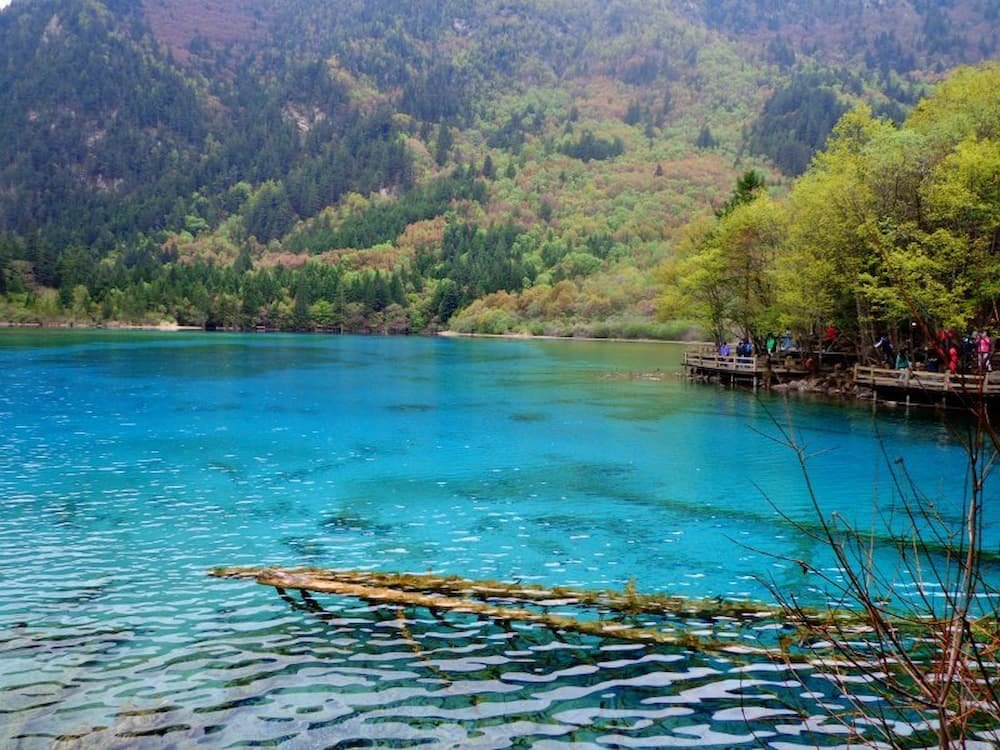
Travel within China is ridiculously cheap. The country is connected by a vast network of buses, trains, and cheap air carriers that make holidaying within the country very affordable if you can handle the ever-present crowds of locals. While the country has yet to fully embrace the backpacking concept and the hostels that support it, hotels are cheap and ever-present.
Even when heading farther afield, China’s proximity to South East and East Asia as well as its growing demand for tourist escapes means that it’s possible to holiday abroad for a fraction of what you might play to start your trek from Australia, New Zealand, or the US.
China is an almost universally misunderstood country, and I found many of my preconceptions about the nation shattered within my first few weeks in the country. Much like South Korea, China is in the midst of a nationwide shift that sees it struggling to embrace lucrative western concepts while staying true to its ancient roots.
Contrary to popular belief, China is not a Communist country – something I had to explain to virtually everybody I spoke to from back home. Capitalism is alive and well in the country as it turns an eye towards world domination via finance rather than strength of arms. Designer labels abound in the wealthier eastern cities, and foreign trends such as the NBA, the Big Bang Theory, and even Game of Thrones are becoming part of the local pop culture.
At the same time, there’s a desire to cling to China’s own unique identity. It is a country where you can shop in a high-end mall on a Saturday and spend your Sunday afternoon taking in an idyllic rice paddy still being tended by weathered old ladies; where a Backstreet Boys concert can occur just a block from a park where dozens of locals practice Ti Chi as the sunsets.
The farther from Shanghai, Beijing, and Guangzhou you travel – the easier it is to see China as it was just a scant few decades ago. While the east coast scurries to match it with the rest of the world financially and industrially, there’s still an abundance of remote villages, isolated temples, and distinct cultures (China boasts dozens of racial groups in addition to the ruling and predominant Han).
While it’s true that China’s rapid industrialization (not to mention events such as the Cultural Revolution and the ill-fated Great Leap Forward) has done a great deal of damage to China’s ancient sites and long history, it is still possible to gain a glimpse into one of the most long-lived cultures in the world.
It might seem that the crowded streets of spitting, smartphone touting, personal space invading cities like Shanghai or Beijing are the norm – but that couldn’t be farther from the truth. While China is making massive leaps forward in trying to turn much of the country into cookie-cutter cities full of sky-rise apartments and factories, much of the country still exists as it did before its doors were re-opened to the west.
Hiking in Jiuzhaigou National Park high in the mountains of northern Sichuan allows you to appreciate the immense natural beauty that the country still possesses even as air pollution and over-population threaten it in some areas.
A trip to the aforementioned Xinjiang is akin to traveling to an entirely new country, so different are its dusty streets and Central Asian-inspired architecture from the towering skyscrapers of the east.

China is still the land of Kung Fu and Tiger Leaping Gorge; of jade serpents and tea ceremonies – you just have to look beyond the more westernized cities.
Chinese history is more than just these old ideas of what China is. A visit to Nanjing will show you the immense tragedy that the nation endured during World War II, while Shanghai’s own diverse history is still on display as you move through the various concessions that the nation once made to foreign powers such as France (the French Concession) and the United Kingdom (The Bund).
In Hainan there is a distinct Russian influence, while Yunnan shares a great deal in common with neighboring Vietnam. Hong Kong still clings desperately to its British roots where Macau is a fascinating blend of Chinese and Portuguese influences. The Northern provinces boast Mongolian and even North Korean influences as well, making for a fascinating melting pot of differing cultural ideals, traditions, and (I didn’t forget about Chinese food) cuisines. Not a fan of the greasy Jiangsu cuisine? Head over to spice-obsessed Hunan (home of Chairman Mao), the seafood of Qingdao, or the perhaps more familiar tastes of Cantonese food.
Want to learn more about how you can get started teaching English in China? Check out our guide Teaching English Abroad, which just happens to be co-written by Chris.
The Running of the Bulls is a must-see for many tourists that involves running in front of six bulls and a number of steers that have been let loose, on a course through the streets of Pamplona. The running in Pamplona – Spain is the most famous running locally known as San Fermin, although there are other runnings held in towns and villages across Spain, Portugal, and in some cities in Mexico and southern France, during the summer. Unlike bullfights, which are performed by professionals, anyone may participate in an encierro.
According to the Spanish, the running first began in North-eastern Spain during the early 14th century. While transporting cattle in order to sell at the market, men would attempt to speed the process by hurrying their cattle using tactics of fear and excitement. After years of this practice, the transportation and hurrying began to turn into a competition, as young adults would attempt to race in front of the bulls and make it safely to their pens without being overtaken. When the popularity of this practice increased and was noticed more and more by the expanding population of Spanish cities, a tradition was created and stands to this day.

The celebration is dedicated to Pamplona’s very own Saint Fermin, who was killed one morning back in the 4th century by bulls that dragged him through the streets of the old town, reportedly after a few too many sangrias.
While the excitement and hype of this event draws thousands of tourists each year injuries are common and participants are often gored or trampled by the bulls, whose hooves grip poorly on the paved or cobbled street surfaces.

To enter you must be over eighteen and “get in” before 7:30 am. It is against the rules to run under the influence of alcohol, although most of the participants I see have rocked up after a massive night of partying and are clearly under the weather. Really the only other rule is that you mustn’t run in the opposite direction of the running (but seriously who would want to do that).
A double wooden fence is used along the course where the streets permit, while in other parts the buildings of the street act as barriers. The idea is that there is just enough room for a person to slide through but not enough for a bull. Some of the fences are permanent fixtures for the entire 9 days while others are mounted and dismounted every morning.

I have arrived the night before day 2 and already the town is buzzing with excitement. I have driven my car here from San Sebastian and find it extremely difficult to get a parking spot for the day so I can look for a place to stay…yea that’s right I didn’t book a room.
After searching all day for a bed unsuccessfully, I am forced to sleep in the car tonight. It’s a looooong night…..
When dawn finally breaks I am up and strolling through the streets. To my surprise, there are thousands of drunken people still wandering about from the night before… I wonder if they will make up a portion of the runners.

Having researched a little about the running I position myself nicely on top of a gate at the second turn. This turns out to be a great spot indeed! Before the runners can enter the course the officials hose down the streets to wash away the filth (a combination of alcohol and pee).
The anticipation builds as we draw closer to the start and I can see the nerves appearing on the faces of the runners as they jockey for position along the course in front of me. The first rocket is set off at 8 am to alert the runners that the corral gate is open. A second rocket signals that all six bulls and six steers have been released.
At first, the collective crowd slowly edges forward but it’s not too long before there are people sprinting past me and I catch a glimpse of the first of the six bulls. Along with the bulls, there are a number of steers, whose primary function is to keep the pack moving forward and prevent any of the bulls from turning. On this occasion, however, they fail and one of the bulls has turned and I watch as it lines up a young guy and pins him to the barrier. It’s one of those train crash moments where you can’t look away but his screams confirm his severe injuries.

After the event, I go and take a look at the carnage from the incident and you can see from the picture the two distinct gore holes where the bull has pinned the guy. There is also a lot of blood on the ground….. I decide at this moment not to run tomorrow.
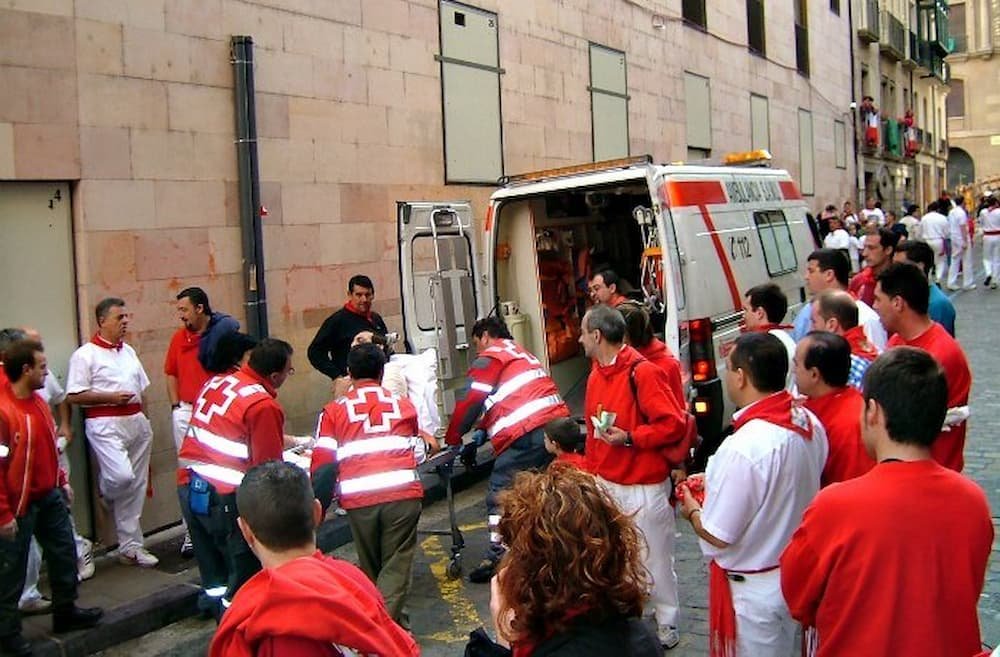
Without a doubt, this is one festival not to be missed!
